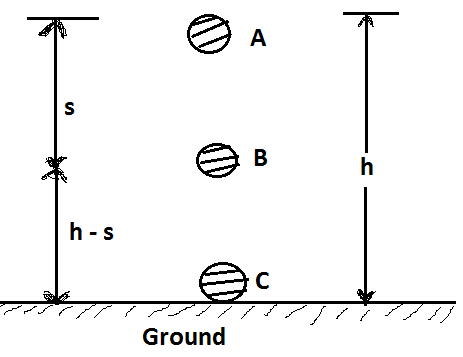Transformation of Energy:
Energy exists in many forms such as mechanical energy (potential and kinetic), heat energy, light energy, magnetic energy, sound energy, electrical energy etc. In physics, we come across many instances wherein energy is either changing from one form to another or being transferred from one body (or system) to another. For instance, when coal or oil burns, chemical energy is being transformed into heat energy. Similarly, on passing an electric current through an electric heater, the electrical energy is converted into heat energy and so on.
In nature, many instances of transformation of energy from one form into another have been noticed. Some typical examples are as under-
- When a stone is allowed to fall from a building, the potential energy is transformed into kinetic energy.
- When a pendulum bob is released from one of the extreme position to the mean position, the potential energy is converted into kinetic energy.
- When a bus is moving up a hill, the kinetic energy is changed into the potential energy.
- When the running water is made to run a dynamo, the kinetic energy is changed into electrical energy.
- In steam engine, the heat energy of super-heated steam is transformed into mechanical energy of motion.
- In the sun, the mass changes into radiant energy.
Similarly, when a ball rolling on the surface of the earth comes to the state of rest, the kinetic energy is transformed into heat on account of the force of friction offered by the ground and the resistance of the air.
Evidently, all these cases illustrate the transformation of energy from one form to another.
Conservation of Energy:
In the cases discussed above, we observe that the energy simply changes its form. Careful measurements show that in all cases the total energy of a system remains conserved. This fact was stated for the first time in the form of a law of conservation of energy by a German Physicist Robert Mayor in the year 1842.
According to this law, the sum total of the energy in the universe remains constant, though it may change from one form into another.
The principle of conservation of energy constitutes the fundamental law of the science of physics. In fact, it forms the foundation on which the entire structure of physical science has been built. The applications of this principle are large and diverse, ranging from particle physics to cosmic physics.
We shall now discuss as to how the principle of conservation of energy is applied in case of mechanical energy.
Consider a body of mass ‘m‘ gm., raised from the ground level ‘C‘ to a point ‘A‘ through a vertical height ‘h‘ cm. At this point, the energy possessed by the body is entirely the gravitational potential energy and is equal to ‘mgh‘.
As the body falls downwards freely under the influence of force of gravity, height as well as its potential energy goes on decreasing but its velocity as well as its kinetic energy goes on increasing.

Body at the point A:
Potential Energy (P.E.) of the body = mgh
Kinetic Energy (K.E.) of the body = 1/2 mν2 = 0 ; because ν at A = 0
Therefore, total mechanical energy of the body = K.E. + P.E. = 0 + mgh = mgh erg ————(1)
Body at the point B:
The body has fallen from rest through a distance ‘s‘ and thus has acquired a velocity ‘ν‘ and it is at a height (h – s) from the ground, we know
ν2 – μ2 = 2gs
or ν2 – 0 = 2gs
or ν2 = 2gs
Kinetic energy (K.E.) of the body at B = 1/2 mν2 = 1/2 m X 2gs = mgs
Potential energy (P.E.) of the body at B = mg (h – s)
Therefore, total mechanical energy of the body at B = K.E. + P.E. = mgs + mg (h – s) = mgs + mgh – mgs
Hence, total mechanical energy = = mgh erg ……………(2)
Body at the point C:
As the body reaches the point ‘C’ on the ground, its potential energy becomes zero. It possesses only the kinetic energy. we know,
ν2 – μ2 = 2gh
or ν2 = 2gh, because μ = 0
Kinetic energy of the body at C = 1/2 mν2 = 1/2 m X 2gh = mgh
Potential energy of the body at C = mgh = mg X 0 = 0, because h = 0
Total mechanical energy of the body at C = K.E. + P.E. = mgh + 0 = mgh erg …………..(3)
It is obvious from the relation (1), (2) and (3) that all positions of the body during its fall, the total mechanical energy of the falling body is always constant. If we assume there is no resistance due to air, on reaching the ground the total mechanical energy of the body is transformed into heat energy, sound energy etc.
- Work And Power
- Newtons First Law Of Motion
- Newtons Second Law of Motion
- Newtons Third Law of Motion
- Cells Structure and Functions
- Flotation of Bodies
- Relative Density and Specific Gravity
- Electrochemistry Notes From Tamil Board









Comments (No)